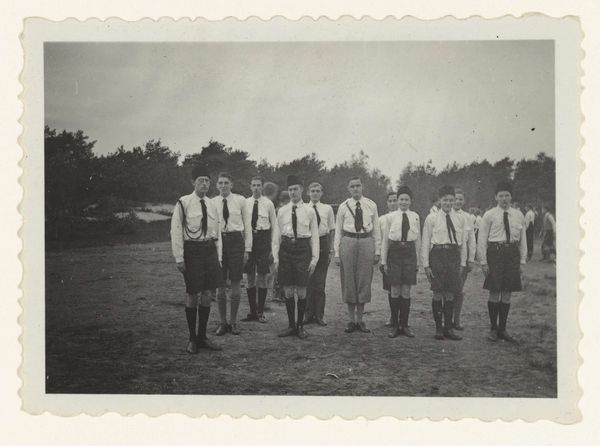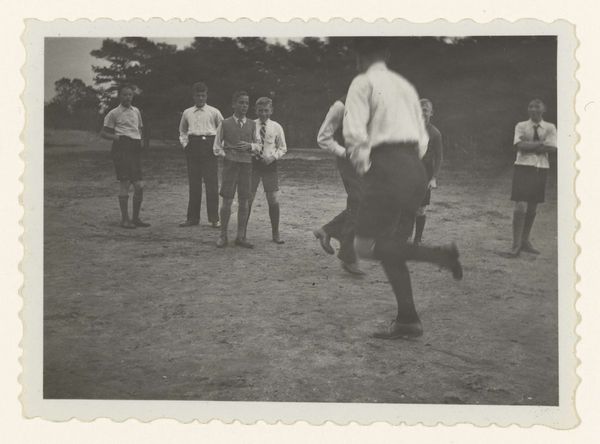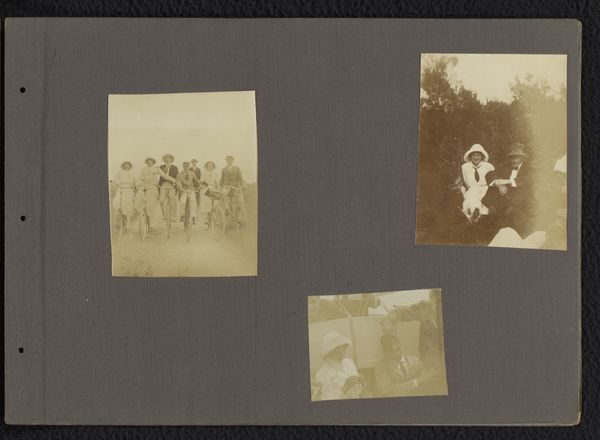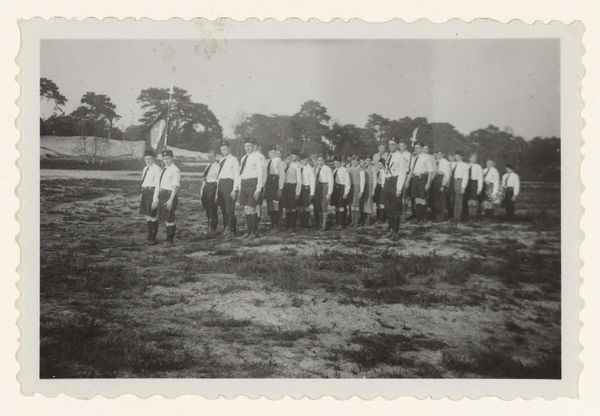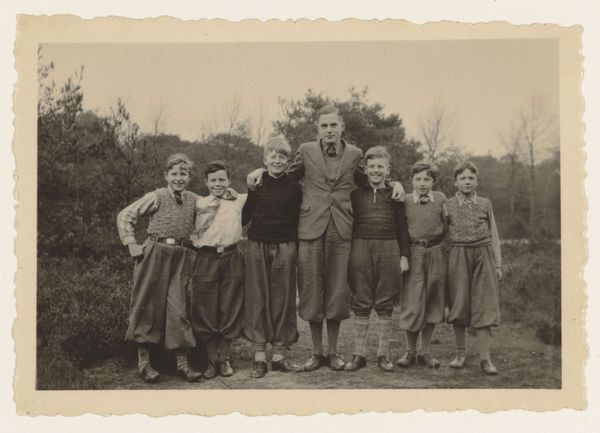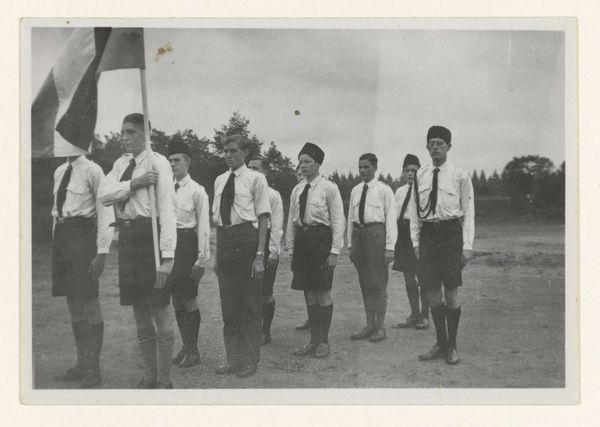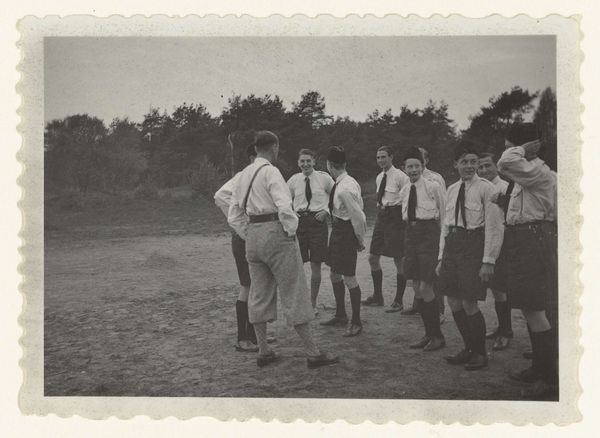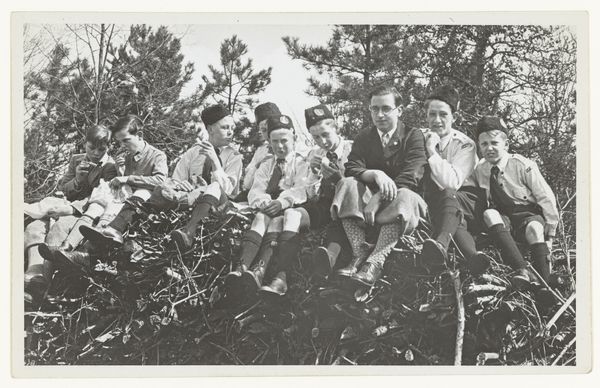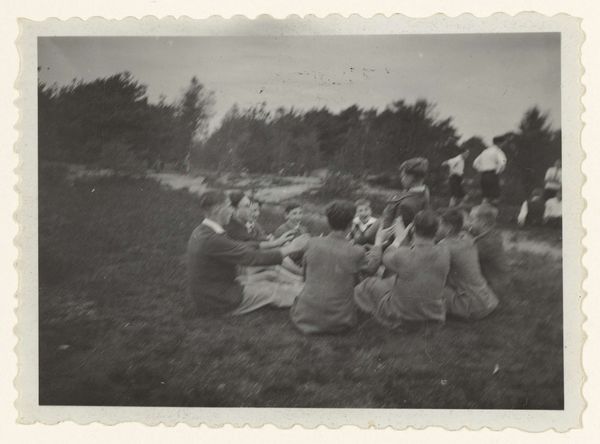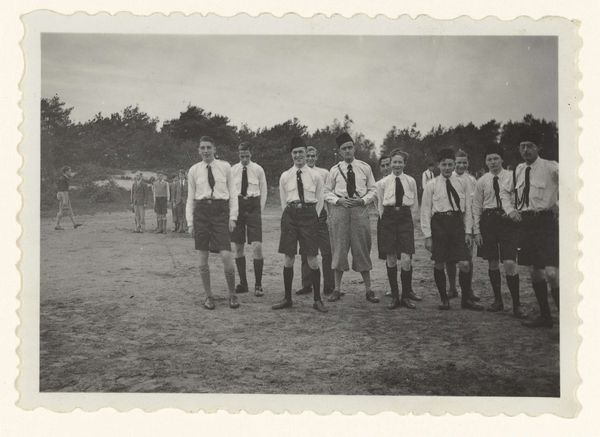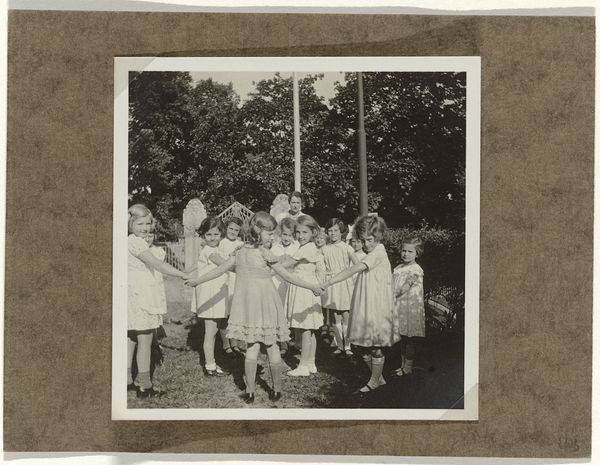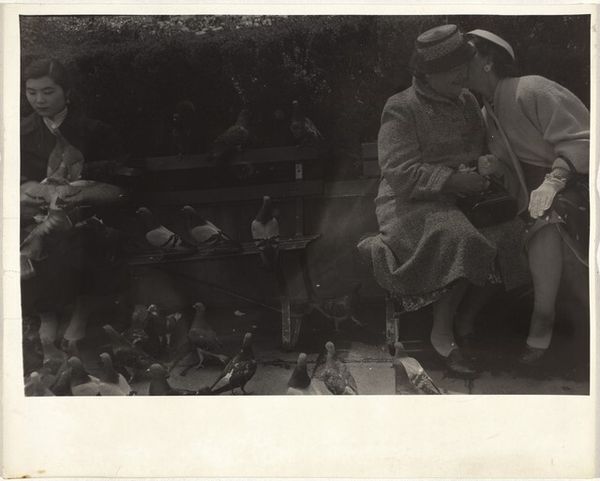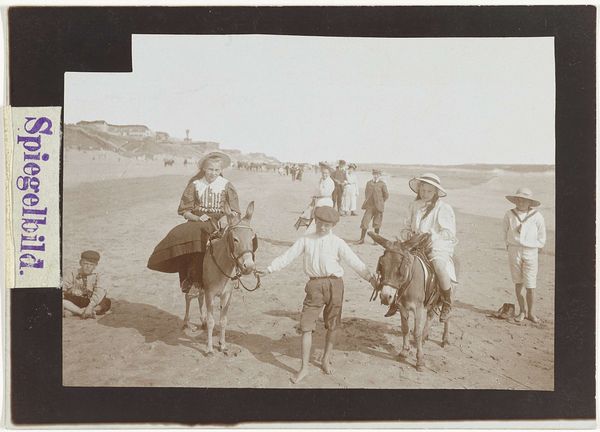
#
print photography
#
picture layout
#
photo restoration
#
joyful generate happy emotion
#
retro 'vintage design
#
archive photography
#
historical photography
#
old-timey
#
photo layout
#
celebration photography
Dimensions: height 5.5 cm, width 8 cm
Copyright: Rijks Museum: Open Domain
Curator: This photograph, titled "Jongens van de Jeugdstorm," offers a glimpse into a complex moment in history. The Rijksmuseum dates it possibly to 1934-1935, during the rise of the NSB in the Netherlands. Editor: The image has a somber stillness, despite the group of young men assembled in what seems to be a field. The stark contrast between the light sky and dark earth adds to this feeling. Curator: Absolutely. And beyond the visual impression, it's crucial to acknowledge the context. The "Jeugdstorm" was a youth organization affiliated with the NSB, the Dutch National Socialist Movement. Understanding the political ideology behind this image is essential to avoid romanticizing it. We must ask, what power dynamics are at play here? How does this image contribute to our understanding of indoctrination? Editor: From a compositional viewpoint, the subjects appear arranged in a slightly haphazard yet deliberate fashion. Varying heights and the arrangement, combined with their direct gazes, create an unnerving asymmetry and tension across the frame. Curator: The expressions are unsettling when seen with historical awareness. Some of them are eager; others, perhaps, reserved. We cannot interpret these boys as simply joyful. It reminds us how insidious propaganda can be, especially when targeted at youth. What happens to these children growing up during the Nazi Occupation and the social impact that this trauma creates should not be minimized when observing a historical picture such as this. Editor: Looking more closely, the photographer's decision to use a relatively shallow depth of field blurs the background. It forces our attention onto the individuals and the texture of their clothing. It’s also evident that much attention was placed on carefully spacing the subjects to frame their interaction as well. Curator: Yes, and it reminds us to be critical of visual rhetoric. What are we seeing, and what are we not seeing? Whose narrative is being privileged, and at whose expense? We can use art, or photographs in this case, as primary historical evidence to teach social injustice and explore how people develop moral courage when standing up to those injustices. Editor: For me, analysing this work has brought to the fore how technique, even in a seemingly straightforward snapshot, reinforces particular interpretations and emotional resonances, something we often take for granted. Curator: I agree. For me, revisiting this image is a sobering reminder of how ideologies can manipulate and the importance of analyzing visual culture through the lens of power and resistance.
Comments
No comments
Be the first to comment and join the conversation on the ultimate creative platform.
